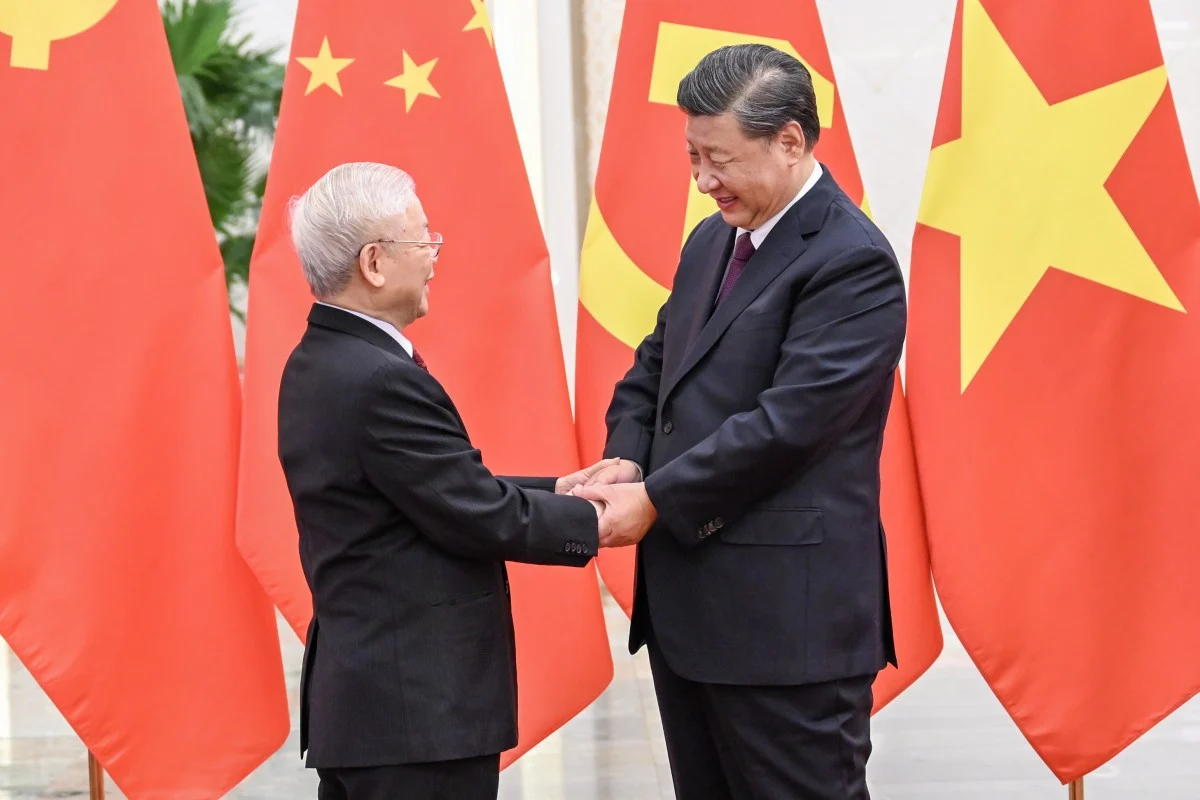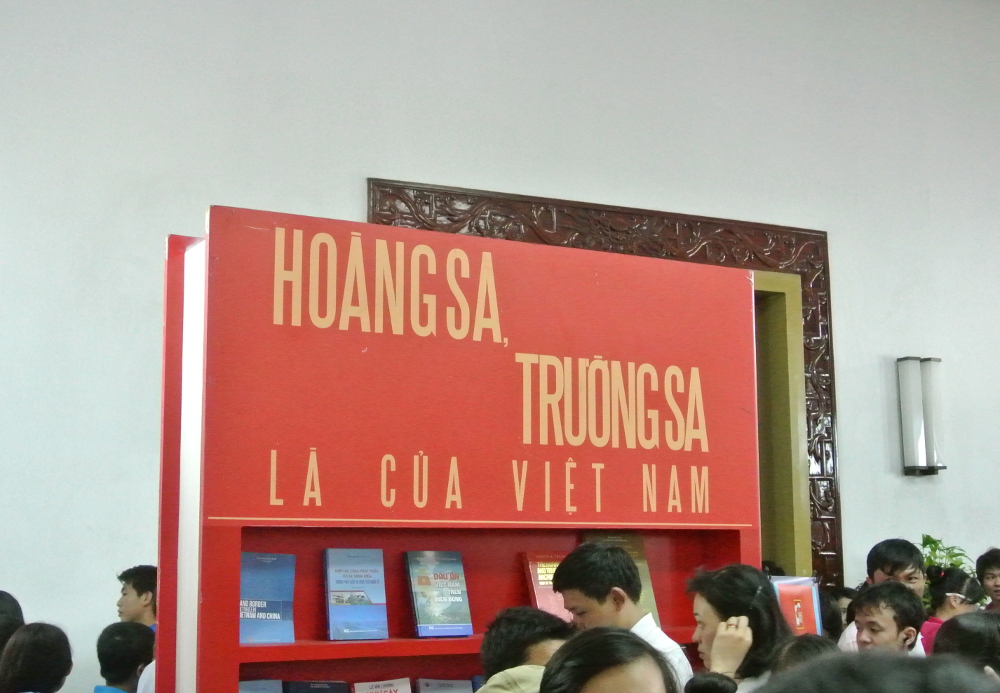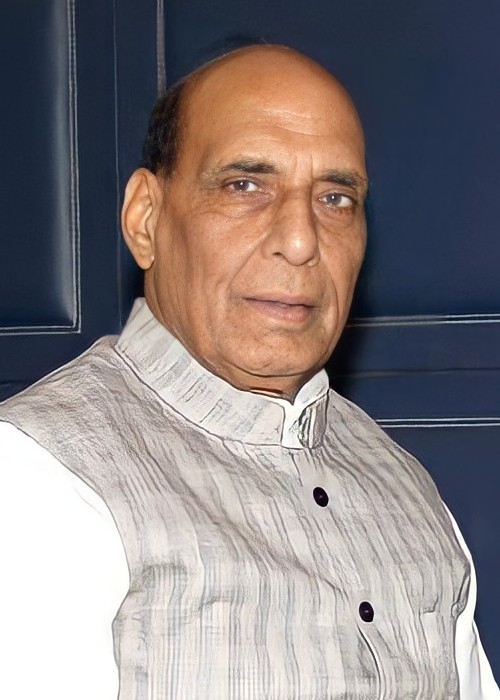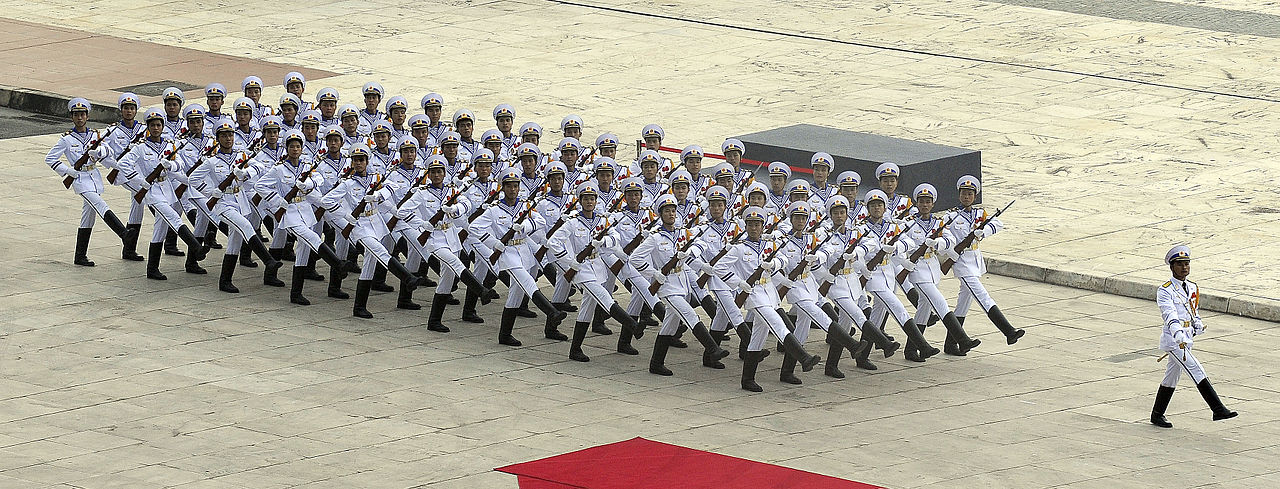
Chinese President Xi Jinping (right) shakes hands with Vietnam’s Communist Party chief Nguyen Phu Trong (left) in Beijing.
“Regarding issues at sea, the two leaders exchanged sincere and frank opinions in depth, emphasizing the need to better control and actively resolve disagreements at sea, maintaining peace and stability in the Sea. East and Region.”
The waters surrounding the Paracel Islands in the South China Sea are paramount to the interests of the surrounding states due to the potential energy reserves, geo-strategic locations, and fishing resources. Although China maintains de facto control over the Paracel Islands, Vietnam also has laid claim to them, leading to increasing tensions. On 12 December 2023, Chinese President Xi Jinping met with the General Secretary of the Communist Party of Vietnam Central Committee, Nguyen Phu Trong to ease these tensions. According to the first excerpted articles from the Vietnamese news media aggregator Báo Mới, General Secretary Trong requested both sides respect each other’s legitimate interests and resolve disputes by peaceful means per international law, including the 1982 United Nations Convention on the Law of the Sea. As per the second excerpted article from the military-focused China Military Network[i], it was noted that China and Vietnam were at a “critical stage of reform and development.” The article also highlighted the nearly three dozen agreements signed during the visit as proof of improving relations between the two countries. However, the December Xi-Trong meeting is set against the backdrop of longstanding tension between China and Vietnam stemming from both countries’ claims of sovereignty over both the Paracel and Spratly Island in the South China Sea. China has codified its claims across the region with its nine-dash line maritime policy, a visual representation of China’s claims that appears on some official and comparative maps of disputed claims in the region, but which has been refuted by international maritime law.[ii] While China would like to settle tensions with Vietnam, it is unlikely that the recent meeting between Xi and Trong, and subsequent bilateral agreements, would dissuade Vietnam from its current claims of Vietnamese features in the South China Sea.[iii]
Sources:
“Việt Nam và Trung Quốc nhất trí xây dựng Cộng đồng chia sẻ tương lai (Vietnam and China agreed to build a Community of Shared Future),” Báo Mới (Hanoi-based Vietnamese news aggregator), 12 December 2023. https://baomoi-com/ viet-nam-va-trung-quoc-nhat-tri-xay-dung-cong-dong-chia-se-tuong-lai-c47792276.epi
General Secretary Nguyen Phu Trong emphasized that in the context of complex international and regional developments, it is important that countries jointly implement policies of peace, cooperation, and development, and comply with the law. Internationally respecting each other’s equality and legitimate interests.
“志同道合携手行,命运与共创未来中共中央政治局委员、外交部长王毅谈习近平总书记、国家主席对越南国事访问 (Like-minded people join hands to create a shared future – Wang Yi, member of the Political Bureau of the CPC Central Committee and Foreign Minister, talks about General Secretary Xi Jinping and President Xi Jinping’s state visit to Vietnam),” China Military Network (Chinese military news focused media aggregator), 14 December 2023. https://www.81.cn/yw_208727/16273510.html
Currently, both China and Vietnam are at a critical stage of reform and development. Strengthening mutually beneficial cooperation has both inherent advantages and practical needs. During this visit, the two sides signed more than 30 cooperation agreements, covering all aspects of the “Belt and Road”, development cooperation, digital economy, green development, transportation, inspection and quarantine, defense and law enforcement security cooperation, maritime cooperation, etc., expanding the breadth of China-Vietnam relations.
Notes:
[i] China Military Network can also be translated “Chinese military web.” The page banner includes links to the Chinese Ministry of Defense, military newspapers, and topical sites like “Strategy,” and Foreign Ministry and Defense Ministry press briefings. The URL is significant because 81 represents 1 August 1927, the founding date for the Red Army.
[ii] In 2016 the Permanent Court of Arbitration in the Hague had ruled China’s nine-dash line maritime policy to be illegitimate. China had disregarded the Court’s ruling, and the 1982 United Nations Convention on the Law of the Sea, and has continued to aggressively enforce its nine-dash line maritime policy. For a U.S. government’s perspective of the Arbitration’s ruling see: “South China Sea Arbitration Ruling: What Happened and What’s Next?,” U.S.-China Economic and Security Review Commission, 12 July 2016. https://www.uscc.gov/sites/default/files/Research/Issue Brief, South China Sea Arbitration Ruling What Happened and What%27s Next071216.pdf
[iii] For additional context, see: Jacob Zenn, “Vietnam Taking Diplomatic Approach to Spratly Islands Territorial Disputes,” OE Watch, 08-2023. https://fmso.tradoc.army.mil/2023/vietnam-taking-diplomatic-approach-to-spratly-islands-territorial-disputes/; For a comparison of China’s claims and recent confrontations with the Philippines in the Spratly Islands, see: Dodge Billingsley, “China and Philippines Spar Over Grounded Ship in Spratly Islands, OE Watch, 08-2023. https://fmso.tradoc.army.mil/2023/china-and-philippines-spar-over-grounded-ship-in-spratly-islands/
Image Information:
Image: Chinese President Xi Jinping (right) shakes hands with Vietnam’s Communist Party chief Nguyen Phu Trong (left) in Beijing.
Source: https://www.scmp.com/week-asia/politics/article/3244526/xi-jinping-set-woo-vietnam-new-rail-and-rare-earth-projects-bid-curb-rising-us-clout
Attribution: CC BY-SA 4.0




